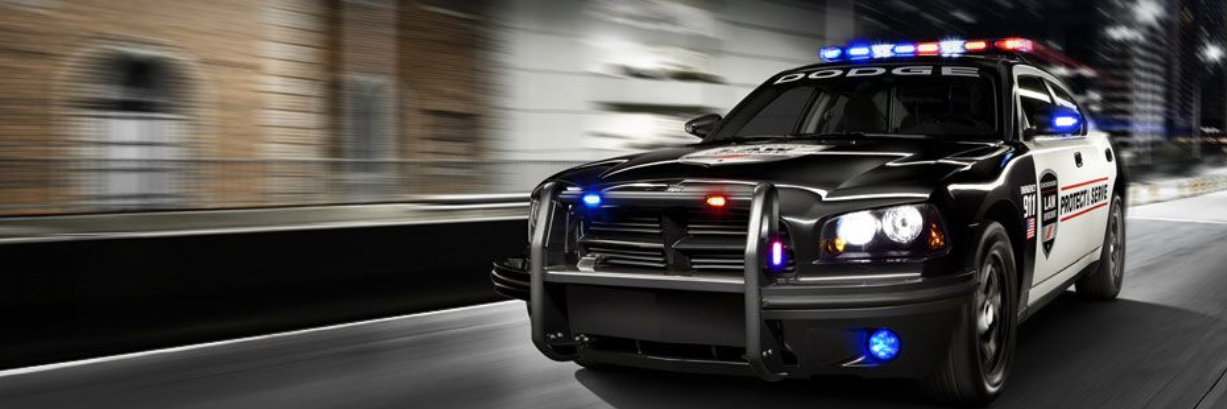With StarChase, you just tag the suspect vehicle, then fall back and wait
For as long as I can remember, police pursuits have been a delicate and controversial topic. Pursuits are hazardous under the best conditions, and the best conditions are seldom present. Banning pursuits sends the message to the criminal community that compliance with police is optional. We have to face the reality that most cops are not the drivers they think they are. Year after year, we lose as many cops to vehicle wrecks as we do to felonious assault, and half of those are single-vehicle accidents.
An adaptation of existing technology from StarChase offers an alternative to the prolonged vehicle pursuit. StarChase’s solution places a locating transmitter onto the fleeing vehicle. Officers can then monitor the vehicle’s travel via a web browser, and corner the driver at a place of their choosing when he believes he’s safe.
The StarChase solution consists of a launcher mounted on the front of the police vehicle, loaded with two projectiles and a laser aimer. The driver of the StarChase-equipped police vehicle targets the adjustable laser dot from the aimer fixed to the front grille of the car onto the fleeing car’s body. When the officer activates the launcher, a projectile fires and attaches to the suspect vehicle.
When fired, the projectile begins sending its location data via GPS satellite signal. The StarChase technology utilizes advanced GPS technology that operates extremely well in both open and closed urban environments. Once the location of the vehicle is identified, responding officers can generally locate the suspect vehicle within 5-75 feet.
Once activated, the tracker’s location appears on a map in a secure web browser. Officers in the field can track it in real time, or the information can be relayed to officers from a communications center. The suggested tactic is to fall back once the tracker is in place, then wait for the vehicle to stop or travel to a location where it is easily immobilized or cornered. Batteries in the tracker are good for at least six to eight hours, so there’s no immediacy due to the limits of the system.
StarChase is in use at the Arizona Dept. of Public Safety (highway patrol). In the deployments that have taken place as this is written (late November 2010), the suspect vehicles have been located and recovered 100 percent of the time. When I spoke with Steve Pass from StarChase, I wondered what would happen if the bad guys just removed the tracker from the car. “The crooks haven’t been aware they’ve been tagged. Even if they do discover it, it takes some real effort to remove the projectile,” Pass told me. So far, the speed of the police and suspect vehicles at the time the projectile is fired has not been a factor.
StarChase offers grant-writing assistance for agencies interested in testing and deploying the technology. The launchers and new or refurbished projectiles are sold separately. Less-expensive “practice” projectiles are also available, and use paintball pellets to show where the projectile hit. The costs of using StarChase can certainly accumulate, but still cheap as compared to the cost of wrecked vehicles, dead and injured officers and citizens, and civil actions stemming from pursuits that go badly. If an agency can deploy a few StarChase-equipped vehicles at a time and get them in position to tag the hot car, extended pursuits are ended quickly and more safely for everyone concerned.
About the author
Tim Dees is a writer, editor, trainer, and former law enforcement officer. After 15 years as a police officer with the Reno Police Department and elsewhere in Northern Nevada, Tim taught criminal justice as a full-time professor and instructor at colleges in Wisconsin, West Virginia, Georgia, and Oregon. He was also a regional training coordinator for the Oregon Dept. of Public Safety Standards & Training, providing in-service training to 65 criminal justice agencies in central and eastern Oregon.
Tim has written more than 300 articles for nearly every national law enforcement publication in the United Sttes. In 2005, Tim became the first editor-in-chief for Officer.com, moving to the same position for LawOfficer.com at the beginning of 2008. He now writes on applications of technology in law enforcement from his home in SE Washington state.
Dees can be reached at tim.dees@policeone.com.

Leave a Reply